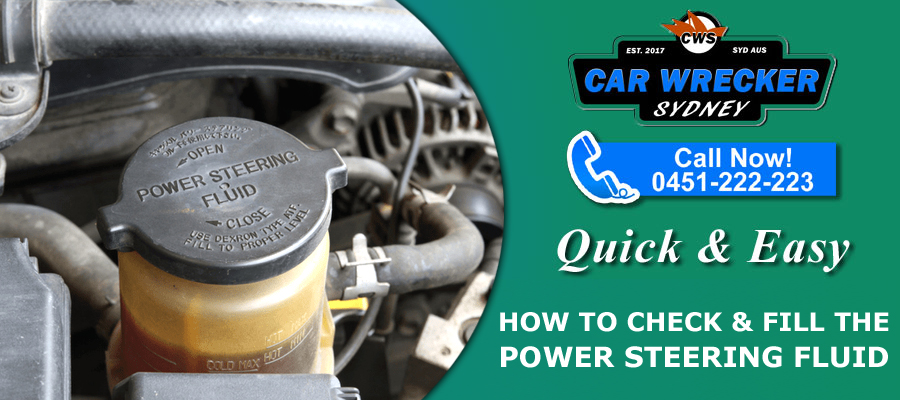If you are the owner of a car that has a hydraulic power-steering system then, you might be facing the issue of turning the steering wheel. It involves huge efforts to turn it. Right? However, Electric and hybrid vehicle owners don’t face these issues only. The Hydraulic power steering system includes hydraulic fluid in it, which is responsible for transmitting the powers for turning the wheels. Hence, driving the experience also boosts up.
The malfunctioning of the power steering system is quite dangerous for the driver as the fluid may get burn, deplete, or contaminated. This may make your turning of steering wheels complicated and lead to a serious accident. Is there any way to avoid this happening? Obviously, every problem has some solution. In this blog, Sydney Car Wreckers discuss how to overcome this issue. Always check your power steering system fluids and adjust as per the guidance.
Step by Step Guide for Filling and Adding the Power Steering Fluid
-
Look for the reservoir cylinder
Are you facing high-pitched sound from your steering wheel while turning it? If the answer is yes then, it might be the case of low power-steering fluid. This fluid is ultimately found in a reservoir cylinder nearby the power steering pump. Make sure it should be clearly labelled. In case, you can’t find it, please have a look at the owner’s manual for the location of the power steering reservoir. Most probable it’s available in the same space in all vehicles.
-
Check the level of the power-steering fluid
Is your reservoir cylinder made of translucent plastic? Then, you might be able to look at the level of fluid inside the cylinder. In case, it is of metal or plastic is not enough transparent to check the level, turn to dipstick now. However, the dipstick is attached to the cap. In a few vehicles, the level of the power steering wheel can be analyse just after a brief running of the engine. While in other vehicles, there are marks on the dipstick for both hot levels after the engine has been working and a cold level after the engine has been off for long period of time. On the contrary, there are several vehicles that have mini or maxi lines for checking the level of fluid. Therefore, make sure to check the power steering level as per the correct mark.
-
Analyse Up to what extent the dipstick is cover by power-steering fluid
Make sure to remove the excess fluid from the dipstick while pulling down from the cylinder first time. Now reinsert it in the cylinder as down as much as you can. And, then pull it down.
-
Check the colour of the power-steering fluid
If you see the brown or black colour of power steering fluid then, it is in the stage of contamination. In this case, you should consult a mechanic so that he can check the parts carefully. If any parts need replacement then, they will do it. The force controlling liquid may look darker than it really is. On the off chance that you have any questions, take a gander at the shade of the force guiding liquid stain on the cloth or paper towel you cleared your dipstick off with. It might be that the stain is the shading the liquid may be right, your liquid isn’t tainted. A high-quality power-steering fluid should be pink, amber, or clear in colour.
-
Add power-steering fluid as per the correct fill level.
If there are gradation marks on the cylinder to ensure the right filling of fluid, you can easily add the fluid with stability until you reach the correct mark of the hot or cold level. In case, you prefer to fill with dipstick, make sure to add it carefully and slowly in order to avoid the overfilling in the reservoir.
Always use the power-steering fluid that is suggested for your vehicle, as it will be the best for your car in terms of thickness for the power-steering system of your car. Make sure not to overfill this otherwise expanded pressure will cause more repairing issues in the car. -
Replace the cylinder cap–
You need to screw the cap into its right place and the place depends on the make of vehicle.



